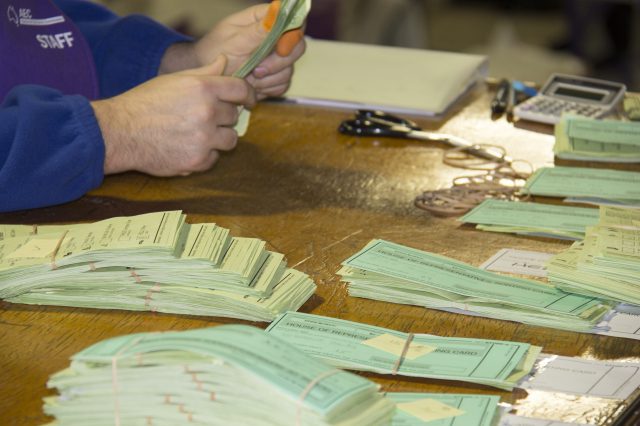The international bipartisan banner and Oz politics

‘Politics stops at the seaboard and anybody who denies that postulate is a son of a bitch and a crook and not a true patriot.’—Dean Acheson, US Secretary of State
Acheson, a wry moustachioed warrior with a WASP’s wasp humour, injected much irony into the iron demands of patriotism.
In foreign and defence policy, the bipartisan banner is used to persuade and bolster, to enlist and to enforce. Bipartisanship serves high policy and low politics.
Political detente allows both sides to agree to agree—and not to argue about tough or important issues. No risk of being politically wounded if you don’t fight.
Australia will see how this works throughout the year. Parliament is back and the partisan battle begins. Once the May budget is delivered, election fever will spike and surge and consume Canberra until Malcolm Turnbull announces his date with destiny and the voters.
The window for a simultaneous half-Senate and House of Reps election is between 4 August 2018 and 18 May 2019. Expect an election this year—the opinion polls will help you track the fever. The commentariat nibbles at the idea Bill Shorten has peaked and the tide turns for Turnbull. Perhaps. The months beyond the federal budget will tell.
The moment polls show Turnbull he’s within reach, the real poll happens. If the prime minister has to hold off until next year, he’ll be clinging to the reins rather than driving the cart. Hanging on will mean the polls still crush the government; panic in coalition ranks will build.
Recent Oz history indicates Turnbull needs to be a freshly re-elected prime minister by Christmas, or he’ll be an ex-PM, dispatched by his voters or his party.
Australian political lore says voters decide using a domestic and an international question, framed by their interests, beliefs and histories: The two questions are:
Domestic: Who will do the best job running the economy and managing the nation?
International: Who do I trust to keep Australia secure?
Politicians spend most of their time fighting the domestic battle. The Turnbull government’s chant about jobs and growth is directed at an average voter delightfully dubbed Mr Jobson Grothe. Labor’s focus on family budget struggles means their pitch is to a voter I’d dub Mr Costa Living.
There’s not much distance between Mr Grothe and Mr Living. The bash and bombast of the Lib–Lab domestic fight is the deep division of small differences.
Now to Lib–Lab bipartisanship around international issues. As long as each side can tick these boxes, they’re happy not to argue:
- US alliance
- Asian commitment and engagement, even integration
- The defence-of-Australia strategy that’s been embraced as official policy since the end of the Vietnam War
- Multilateral institutions and the UN (Following Foxish trends from America, some conservatives cavil, but Australian voters like the UN and are positive about international institutions. The consensus prevails.)
- War in Afghanistan
- Building navy ships and submarines in Australia
Afghanistan and building ships here are interesting case studies in the silent curse of bipartisanship.
The new ships policy is already completely clothed in bipartisanship. The Liberals killed off the Oz car industry policy yet, within political nanoseconds, embraced the logic of a ship/submarine industry policy. High strategy meets low politics and, presto, a new holy cow is born to graze on many billions of dollars.
Afghanistan was Australia’s longest yet least-debated war. The commitment consensus between Australia’s major political parties never wavered; thus, they didn’t talk about it. The bipartisan unity held as the nature of the war evolved, casualties rose and support among Australians fell away.
As Andrew Carr argues in his paper I’m here for an argument, bipartisanship ‘weakens the quality of national policy, reduces accountability, lowers public engagement, and risks estrangement between the military and civil leadership. As it currently operates, the demand for bipartisanship is putting Australia at risk’. You’ll hear none of that as election fever rises.
Labor will berate the Libs about cuts to international aid and question the revived Trans-Pacific Partnership (on both issues Labor will be attacked from the left by the Greens). The Greens–Labor fight for inner-city seats will snatch at the bipartisan Lib–Lab blanket. Yet it’d be a huge surprise if Labor broke with its Hawke–Keating heritage by actively fighting the TPP. Unlike the Europeans and the Americans, Australians think ‘trade’ a good thing, not a swear word.
The Lib–Lab nuance in the bipartisan dance is that the Libs are going to stand much closer to Donald Trump than Labor, while Labor will stand closer to China than the Libs.
The Turnbull government has done a nice job dancing around the Trump dichotomy by lavishing praise on the US while saying nothing negative about The Donald: stress US leadership, downplay the US leader.
The dance worked for Trump’s first year, but won’t survive Turnbull’s lavish reception in Washington later this month, ‘the highest-level visit by an Australian leader in more than a decade’. US presidential hugs usually help Oz leaders. Not this time. Turnbull will strive not to be Trumped while lauding 100 years of alliance mateship.
Labor is standing closer to China, accusing the government of China-bashing and promising a warmer view of China’s belt-and-road infrastructure initiative.
On both China and the US, the bipartisan consensus will rule with some sniping at the edges.
After losing Senator Sam Dastyari over his passionate panda-hugging, Labor won’t run as the China candidate, any more than Turnbull will be the Trump candidate.
Unfurl the bipartisan banner—proclaim patriotism and avoid an argument.

